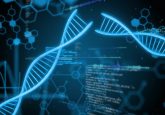LEDs used to speed-up thermal cycling in PCR

Bioengineers at the University of California, Berkeley (UC Berkeley; CA, USA) have developed new technology that could have the potential to make PCR faster, less expensive and more portable. The study, which was recently published in the journal Light: Science & Application, was supported by the Bill and Melinda Gates Foundation (WA, USA) and the National Research Foundation of Korea (Korea).
PCR is one of the most powerful and sensitive tools in clinical laboratories, and is integral in genomics applications, which span from early diagnosis of infectious and hereditary diseases, to paternity tests and cloning research. PCR works by amplifying a single copy of a DNA sequence across several orders of magnitude, producing thousands to millions of copies. In order to amplify these target sequences, PCR requires repeated temperature changes between two or three discrete temperatures.
Luke Lee, the senior author of the study and professor of bioengineering at UC Berkley, explained: “PCR is powerful, and it is widely used in many fields, but existing PCR systems are relatively slow. It is usually done in a lab because the conventional heater used for this test requires a lot of power and is expensive. Because it takes an hour or longer to complete each test, it is not practical for use for point-of-care diagnostics.”
Much work has been done previously to improve PCR systems and make them less time-consuming – a quality that is highly beneficial in point-of-care settings. The current study used LEDs to heat electrons at the interface of a DNA solution and thin films of gold. The team measured the rate of heating the solution at around 55 degrees Fahrenheit per second, and the speed of cooling at about 43.9 degrees per second.
The UC Berkley researchers used thin films of gold, 120nm thick, deposited onto a plastic chip with microfluidic wells. An array of LEDs was positioned beneath the wells, which hold the PCR mixture with the DNA sample. In order to achieve the most efficient light-to-heat conversion, the LED light was tuned to a peak wavelength of 450nm. The researchers were able to perform 30 thermal cycles between 131 degrees and 203 degrees Fahrenheit in less than 5 minutes. The team then assessed the ability of the new fast PCR system to amplify a DNA sequence in contrast with conventional PCR tests, and found the results compared well.
The researchers are now working on integrating the new PCR system into an ultrafast genomic diagnostic chip, and believe the technology could have a wide range of point-of-care applications.
Sources: Son JH, Cho B, Hong S et al. Ultrafast photonic PCR. Light Sci. Appl. 4, e280 (2015); Heating and cooling with light leads to ultrafast DNA diagnostics.






